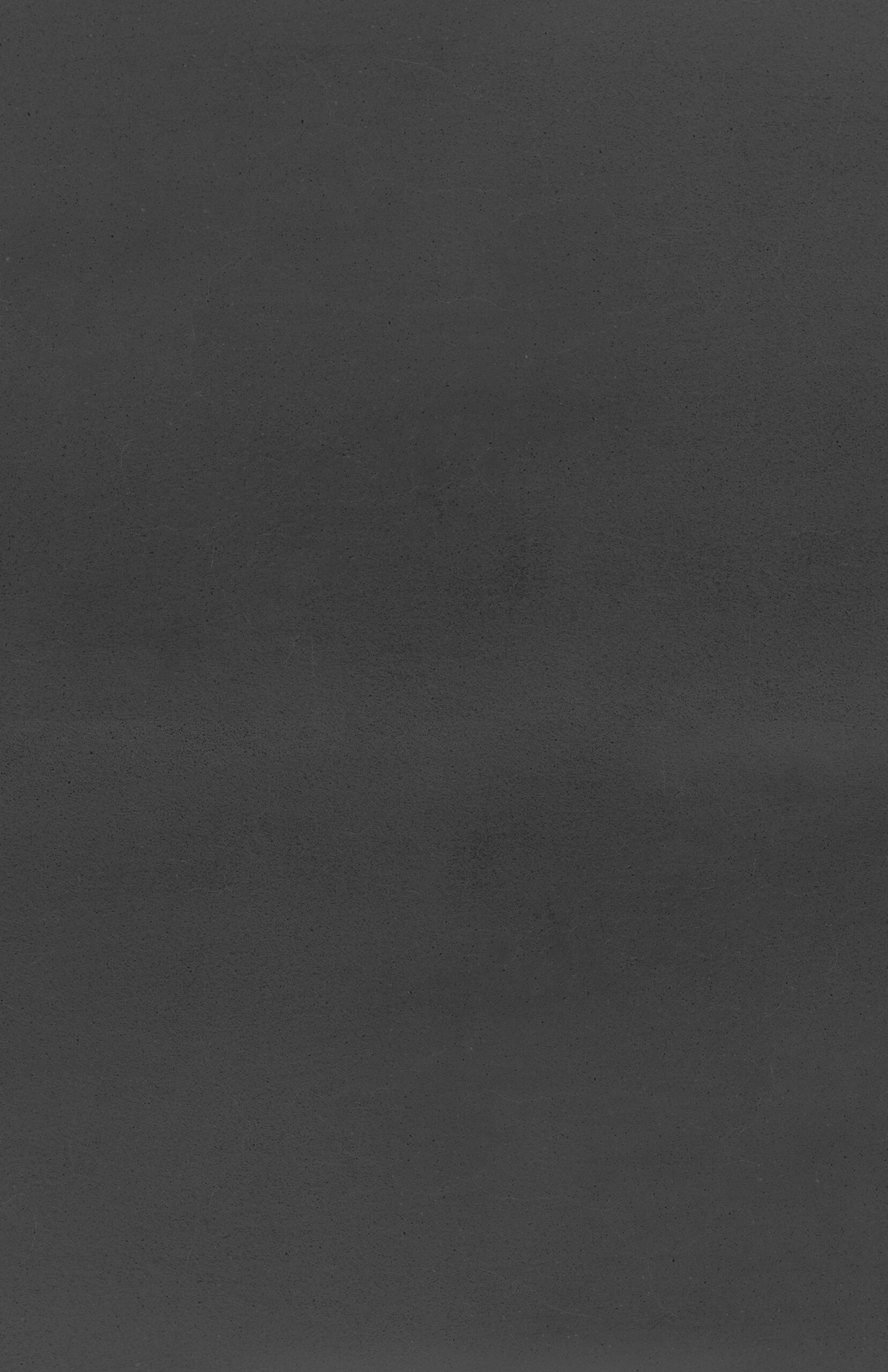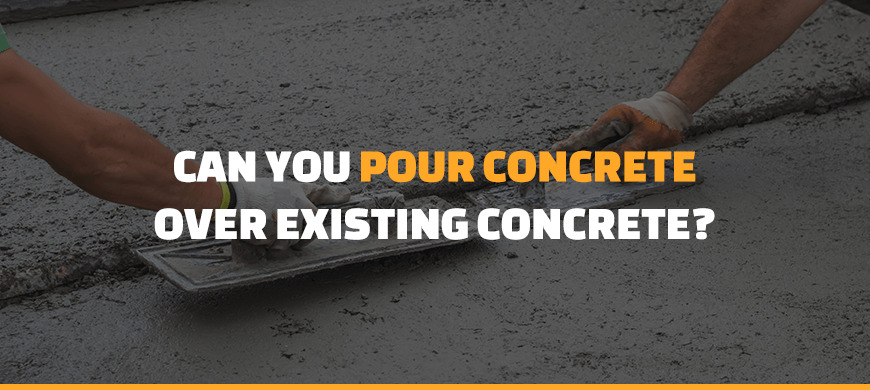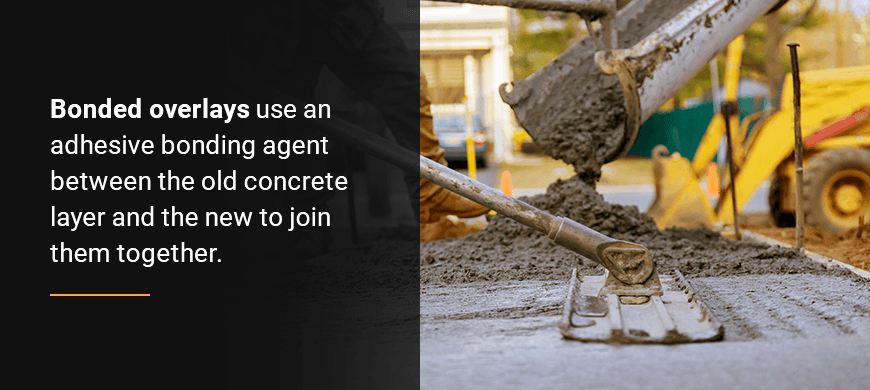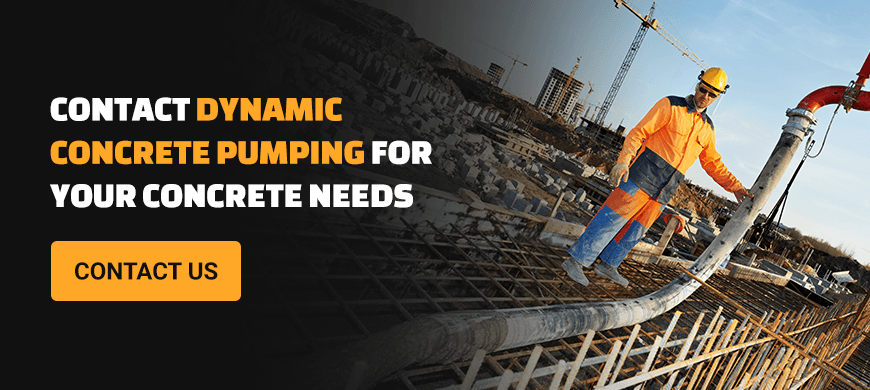
Can You Pour Concrete Over Existing Concrete?
Posted By:Dynamic Concrete Pumping , Date: Mar 21, 2022

Concrete is durable and cost-efficient, with the versatility to be either decorative or purely functional. However, concrete that’s cracked, stained or heavily patched can create structural hazards and harm a project’s overall appearance.
Do you have to remove the old concrete in those cases, or is adding a new layer an option? Learn more about pouring concrete on concrete correctly.
Can You Pour Over Old Concrete?
Pouring concrete over existing concrete is possible as long as you do so properly. When the old concrete serves as the foundation for your new pour, it needs to be a solid one. Before you begin, ensure that you’re prepared for potential issues:
- Minimum required thickness: The concrete slab must be thick enough to hold up against the weight and pressure it supports. Several factors will dictate the minimum thickness of your concrete overlay, including your application method and the size of the aggregates in your concrete mix. Adding concrete over an existing slab will add anywhere from another 25 to 100 millimeters.
- Bonding restrictions: Concrete is composed of sand and aggregates held together with cement. Since cement lacks any natural bonding agents, newly-poured concrete won’t naturally bond to the existing slab. You’ll need to either use a bonding agent to adhere the two layers together or use an unbonded overlay method.
- Condition-affected life span: Properly installed concrete can last for over 50 years. However, the existing concrete’s condition will impact how well the newly poured concrete holds up. Ensuring the initial concrete is in good shape can help safeguard your new overlay’s life span.
contact us for concrete pouring services
When Can You Pour Concrete Over Concrete?
Since your existing slab will be supporting the new concrete, it’s vital to ensure that it’s still structurally sound and its condition is stable. Assess the concrete you want to cover to check for:
- Tree roots growing beneath the area.
- Cracks or buckling due to frost heaves.
- Signs of settling.
Concrete that’s in good condition — free of any breaks, buckling or large cracks — can be a suitable foundation for a new layer. Be sure to repair any small cracks before pouring the new concrete. You can fill narrow cracks with a masonry crack elastomeric filler and hairline cracks with a vinyl concrete patching compound.
Finally, you’ll want to be certain the location can accommodate the additional height from a new pour. The existing slab should be away from any doors that open at its current height and any areas where an elevation change may cause a tripping hazard.
When Should You Repair or Replace the Current Concrete?
In some cases, it may be better to either repair or replace the existing concrete rather than cover it. Serious structural issues in the original slab will eventually affect the new concrete layer as well, and you’ll need to replace the new concrete along with the old.
You can save yourself time and money by repairing or replacing your concrete in the following cases:
- The extra height would present an obstacle: The additional height from a new layer would block a door from opening or present a tripping hazard.
- There are tree roots underneath: Growing roots can cause the concrete to lift and move, disrupting its stability.
- There are significant cracks or pits: While these issues can sabotage a new overlay, you can fix them by repairing and resurfacing the existing concrete.
- The concrete is deteriorating: Concrete that breaks apart under cleaning is beyond repair and needs to be replaced.
- The surface is uneven: Although you can level concrete by adding a new layer, it may be more cost-effective to grind it down instead.
- The slab is sinking: Sinking concrete is usually the result of an improperly installed subbase. In these cases, you’ll need to replace the concrete to fix the underlying issue.
How to Properly Pour Concrete Over Existing Concrete
You’ve established that your existing concrete can support a new layer, and now you’re ready to start your pour.
First, however, you’ll need to decide which methods you should use. Should you opt for a bonded or unbonded overlay? Will the concrete need reinforcement, and if it does, which type should you choose?
Once you’ve made these decisions, you’ll be ready to begin.
Bonded vs. Unbonded Overlays
Bonded overlays use an adhesive bonding agent between the old concrete layer and the new to join them together. You can use this type of overlay if your existing concrete is too thin but in good condition otherwise. The new layer will add a minimum thickness of 25 to 50 millimeters and benefit from the base’s strength and stability.
You should only use bonded overlays when the original slab still has structural and functional integrity — that is, when it can still safely support its expected loads and walking, riding or driving on it is still safe and comfortable.
If your current concrete’s condition is stable but unsuitable for a bonded overlay, you can use an unbonded overlay instead. As it does in a bonded overlay, the base slab serves as a stabilizing subbase. However, this technique also uses an interlay layer — typically geotextiles or bituminous materials — to keep the old and new cement slabs from bonding.
While the existing concrete provides stability for an unbonded overlay, the overlay doesn’t use the base’s strength. To compensate, unbonded overlays must be at least 100 millimeters thick. You may also want to use additional reinforcement methods with this technique.
Reinforcement Methods
Additional reinforcement materials can provide extra strength to your concrete, increasing the weight it can bear and helping to prevent cracks. Consider using one of these options:
- Rebar: Short for “reinforcing bar,” rebar is a type of ridged metal rod placed before pouring and tied or welded into a supporting grid.
- Wire mesh: The wire in this pre-formed grid is a smaller gauge than rebar, making it much more flexible. You should place wire mesh before you begin pouring.
Guide to Pouring Concrete Over Concrete
When you’ve chosen your technique and any reinforcement methods you’ll be using, follow these steps to properly add a layer to your existing concrete:
- Fix any cracks and pits: If you’re using a bonded overlay technique, you’ll need to start with as solid a surface as possible. You can fix spalling — a patchy and pitted surface — with a concrete resurfacer and patch small pits and cracks with a concrete repair mix. While a resurfacer contains bonding agents that allow it to bond to the concrete, you’ll need to apply a scratch coat or liquid bonding agent before using a repair mix.
- Measure the area and prepare your frame: Dig a trench for your frame around each side of the existing concrete. Ensure you take accurate measurements of both the surface area you’ll be covering and the final height the concrete will reach after your new pour. If you’re using an unbonded overlay technique, the height will also include the interlay layer. Once you have your measurements, assemble a wooden frame to fit.
- Clean and prepare the surface: If there are any stains on the current concrete, you can use a detergent or degreaser to remove them or chip away the area with a hammer and chisel. Use a stiff-bristle brush to remove any loose material and follow with a power washer to clear off any remaining dirt or chemicals.
- Install your frame: Fit your frame into place, checking to be sure it’s level on all sides.
- Apply the bonding adhesive or interlay layer: Spray the existing concrete with water to dampen the surface. For a bonded overlay, apply a bonding agent. For an unbonded overlay, add your interlay layer so the top surface is level.
- Pour the concrete and apply the curing compound: Pour your concrete. After you’ve leveled and smoothed the concrete, apply a thin, even layer of curing compound.
Contact Dynamic Concrete Pumping for Your Concrete Needs
Dynamic Concrete Pumping has over 40 years of combined experience in commercial and industrial concrete construction. We’re industry leaders in superflat floor technology, so you can trust us to provide high-quality, award-winning concrete flooring.
If you’re looking for reliable concrete pumping services in western Canada, contact Dynamic Concrete Pumping today for more information!



